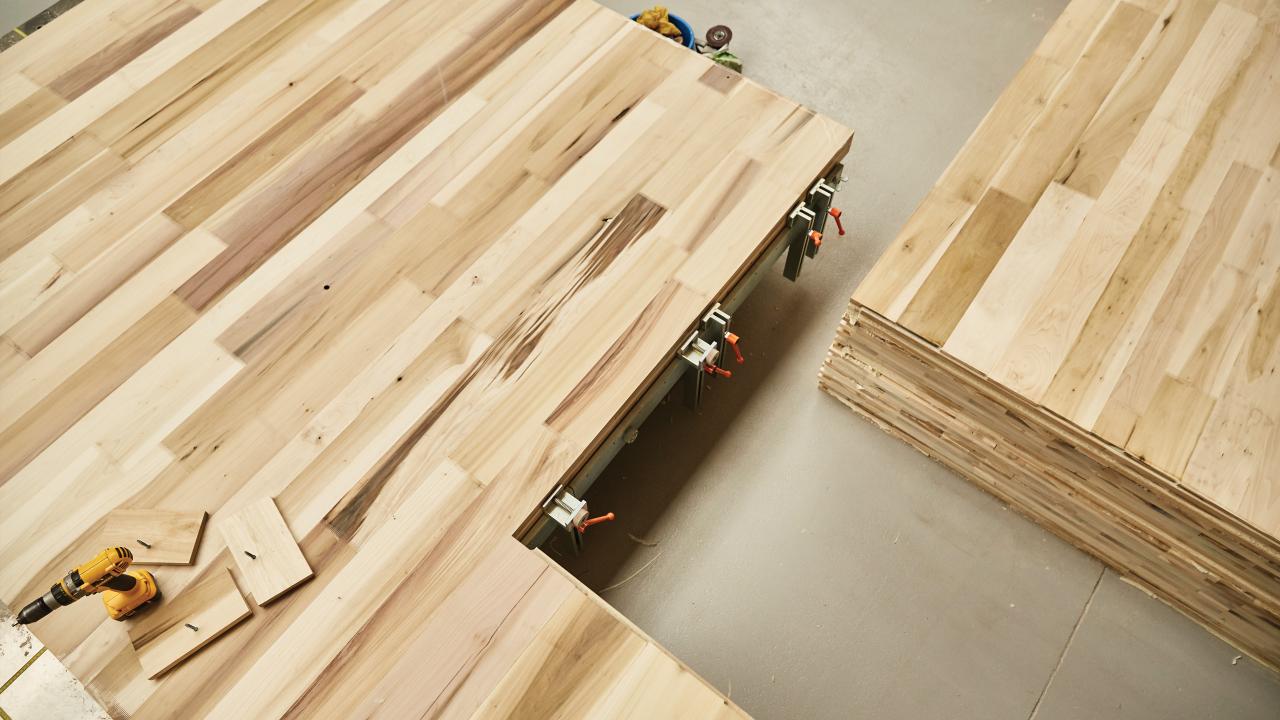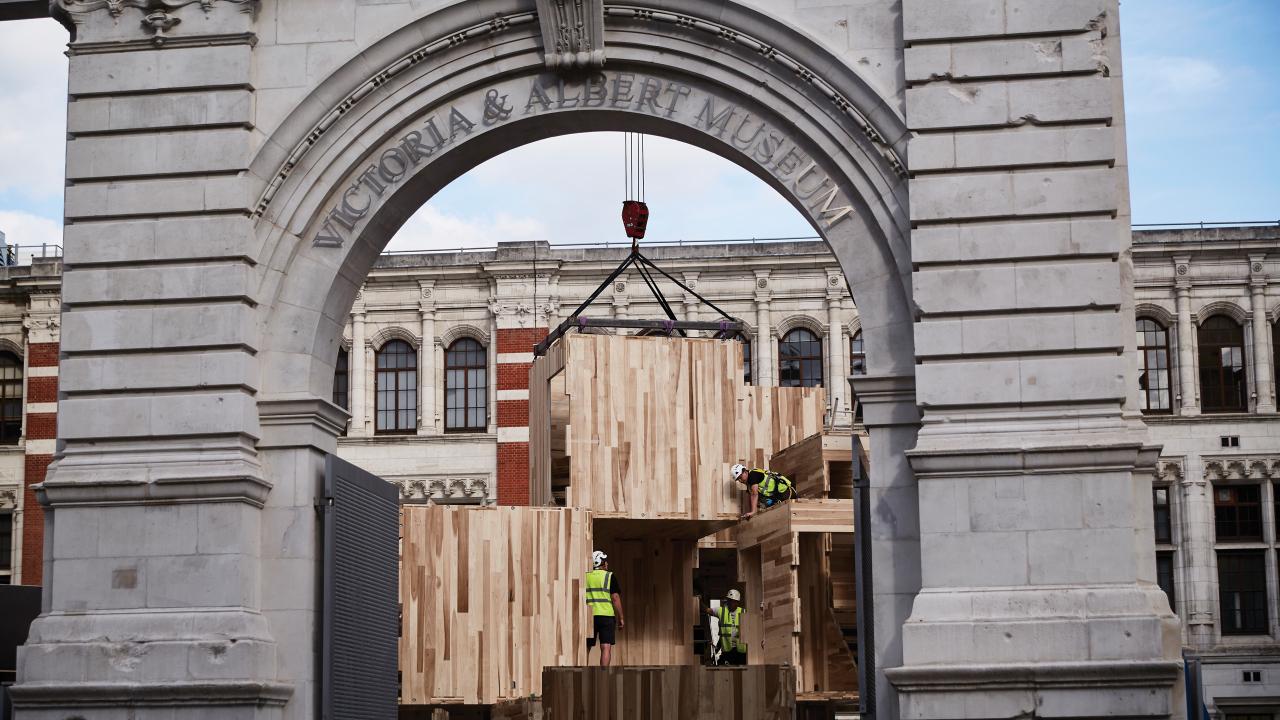A unique partnership of business, academia and applied research came together to make the tulipwood cross laminated timber panels (CLT) for MultiPly. Glenalmond Timber, Construction Scotland Innovation Centre (CSIC) and Edinburgh Napier University’s Centre for Offsite Construction + Innovative Structures (COCIS) all made key contributions. They all also agreed that the project held lessons for the future of wood-based building and specifically use of hardwood in engineered timber construction.
First in the production chain was Glenalmond – the Perthshire-based timber supplier. On receipt of three containers of tulipwood from the U.S. mills, which included some ‘prime’ timber, but was mostly lower ‘2 and 3 commons’ grade, Glenalmond put it all through TH1 visual grading. It was then sawed it into two standard widths to maximise yield and ensure consistent arrangement of the material in the CLT lamellae. Widths were then all cut and finger jointed to lengths specified by project architects Waugh Thistleton and engineers Arup.
“Planing revealed its extraordinary colour variation and the extremely fine finish possible. Tests of the finger-jointed material in our laboratory also highlighted its strength. Some withstood over 100N/mm2, which is impressive.” – Fraser Steele, Glenalmond
Next CSIC came into the MultiPly picture due to its timber-based construction expertise and also as the only facility in the UK with an industrial scale CLT vacuum press. CSIC works with all types of construction materials and approaches. CSIC’s brief was firstly to make the finger-jointed, planed lamellas from Glenalmond into panels for testing at Edinburgh Napier University, then the core 101 CLT panels, split approximately 50/50 between three-ply 60mm and five-ply 100mm thicknesses, for the MultiPly pavilion itself, and lastly, an additional nine panels, 4 of which were fabricated using ultra-durable, moisture resistant thermally-modified tulipwood.
The role of COCIS in the project was to undertake exhaustive performance testing of the timber and finished panels. Professor Robert Hairstans, head of COCIS, agrees that MultiPly could open up new horizons for CLT, and not just in the UK.
“Our core theme will be the possibilities for integrating tulipwood into CLT production and the nature of the end product; one with a high strength to weight ratio and pleasing aesthetics, so with good engineering and architectural credentials.” – Robert Hairstans, Napier University.
The panels and modules had to be of a scale that they could be carried on trollies through the main entrance archway, with just a small crane used to lift them into place. The components and panel joints also had to be made ultra-precisely so that assembly, using just steel connectors and a hand ratchet, would be fast and accurate. In fact, contractor Stage One first assembled and disassembled the structure in their factory to make sure everything fitted – effectively it’s the first prefabricated engineered hardwood flatpack building.
For all parties involved, they all agreed that MultiPly has been valuable to involve future construction market shapers in an area of such innovation and development potential.This has shown that tulipwood CLT can be a real precision product, with panels capable of being CNC machined to tolerances of +/- 1mm.
“Until AHEC approached us, all our work had largely utilised home-grown or imported softwood. In fact this has been the first time large-scale hardwood CLT panels have been made in the UK, where actually there’s no-one yet manufacturing CLT in any volume at all. The high profile of MultiPly, on display in such a prestige venue as the V&A, could also add to momentum for the start of commercial CLT manufacture in the UK. We believe it can only be a matter of time.”– Mark Milne, CSIC.





